

Global View of Emergency Medicine
Indian Summer: Exploring Emergency Medicine in a Developing Nation
This past summer, Jesse Berman and James Semple stayed in a small apartment with limited potable water and dodged motorcycles, speeding auto-rickshaws and the occasional cow on their way to work. Yet they wouldn't change a thing about their time working in Chennai, India. In the words of Mr. Semple, "It was a life-changing experience."
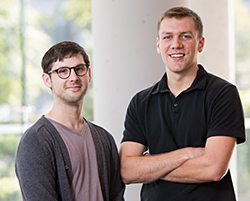
Jesse Berman and James Semple During June and July following their first year at Einstein, the two medical students took part in a five-week global health project. They assisted with research examining triage techniques in the emergency department (ED) at Chennai's Sundaram Medical Foundation, which sees 18,000 to 20,000 patients a year.
The research project involved comparing the effectiveness of two triage systems: the Emergency Severity Index (ESI), used in a majority of U.S. hospitals; and the Modified Early Warning Score (MEWS), used primarily to monitor patients once they've been admitted.
"ESI has a subjective element to it, where you kind of have to make a gut call, while MEWS is completely objective, based on vital signs," explained Mr. Semple.
"The idea we explored was whether combining the two methods offered an easier way of prioritizing who to treat," said Mr. Berman.
"Their input was valuable and helped us move toward the completion of the study," said Dr. Parivalan Rajavelu, who is a consulting surgeon and head of Sundaram's ED.
Alumni Connection & Teamwork
Mr. Semple learned of the opportunity from Einstein alumnus Dr. Kumar Alagappan, who put him in touch with Dr. Rajavelu (or Dr. Pari, as he's known at the medical foundation). As participants in the Einstein Global Health Fellowship Program, the duo headed to Chennai to work with Dr. Pari and with an emergency medicine resident, Ranjit Sam, on carrying out the project.
"The quality and expertise of the doctors there is equal to here," said Mr. Semple.
"But there are economic limitations," noted Mr. Berman. "So, while they had computers and a CAT scan, they didn't have an MRI."
"They really treated us like we were part of the team," added Mr. Semple. "That was made by the fact that medical records are kept in English, and the doctors and residents are required to speak it as well, even though the native language in Chennai is Tamil."
In addition to doing research, the two students took part in the hospital's residency education. "It was interesting to join the residents during rounds, where we saw a lot of patients with diabetes and tuberculosis," said Mr. Berman. "Because the Indian medical education system follows a different time frame, many of the residents were our contemporaries and we felt very welcomed."
Maintaining Ties
Since returning, the duo has remained in contact with their research team, as data continues to be collected. A paper on the project is in the works, and may be ready for presentation by late October 2013.
"The plan is to expand the project to a bigger, multi-center trial that would include two to three hospitals in India, as well as the EDs at Montefiore Medical Center and Jacobi Medical Center here in the Bronx," said Mr. Semple. "That way, we can conduct a comparative study of American and Indian emergency departments, observing how the new triage system our team has developed works in each setting."
Additional Insights
Their experience in India offered cultural enlightenment as well. For example, the water quality posed challenges not often faced in the Bronx. "Construction outside our apartment damaged the water supply and, for weeks, we showered amid the smell of garbage" recalled Mr. Berman. "Towards the end of the trip, we became frequent customers of Kentucky Fried Chicken in order to avoid food prepared locally using the same water."
Walking also was an adventure, as taxis and motorcycles in the city speed past one another. "Crossing the street was like being in a live-action version of the arcade game Frogger," noted Mr. Semple. "And since no one walks and few tourists are seen in the region, the sight of two white men trying to navigate traffic on foot garnered us plenty of puzzled looks."
"Each day we walked about a mile to work and always noticed features of the city that we previously overlooked," said Mr. Berman. "Experiencing the differences of how people live and work provided many opportunities for comparison to our life in the States."
The trip made a lasting impression on both students. Mr. Semple noted, "I find emergency medicine to be an extremely exciting specialty, and our experiences in India reaffirmed my interest in it. The team environment and the detective aspect of it are really fun."
"It was amazing how easy it was to mesh in and feel part of the group in the hospital," added Mr. Berman. "Our differences were set aside."
And now that they're back in the bustling Bronx, Mr. Semple admitted, "I actually miss the slower pace of India and the quirks of life there. India had a deep impact on the way I now look at the world."
He continued, "It has shaped me into a more well-rounded and open-minded global citizen, which I believe will help my future career as a physician."
Photo Gallery
The following are photos provided by Jesse Berman.
(To view slideshow of gallery, click on an image below; then move your mouse over the left or right margins to navigate.)
Posted on: Thursday, October 10, 2013



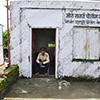
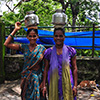

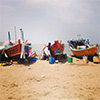
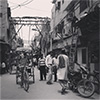
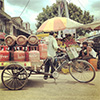

Tablet Blog